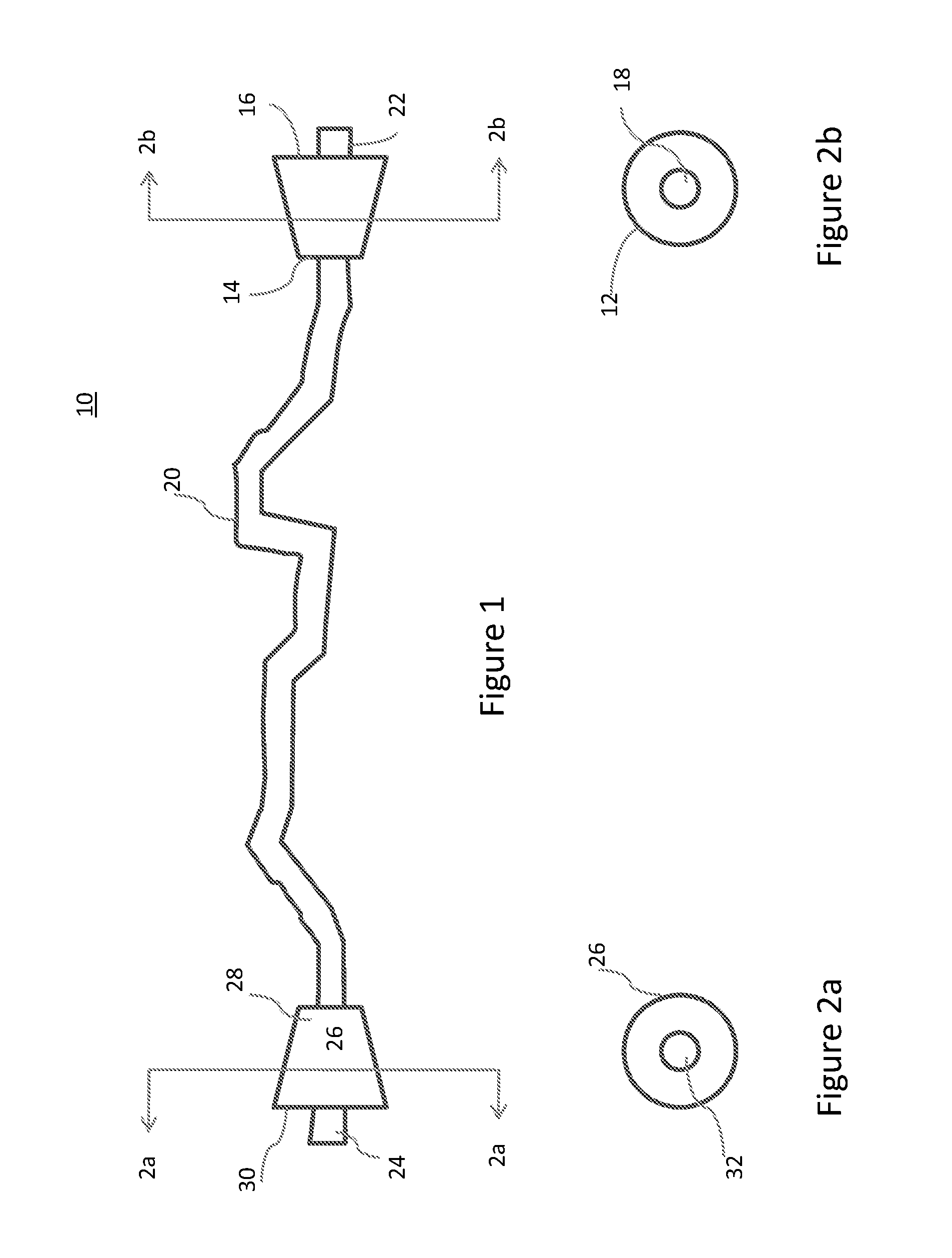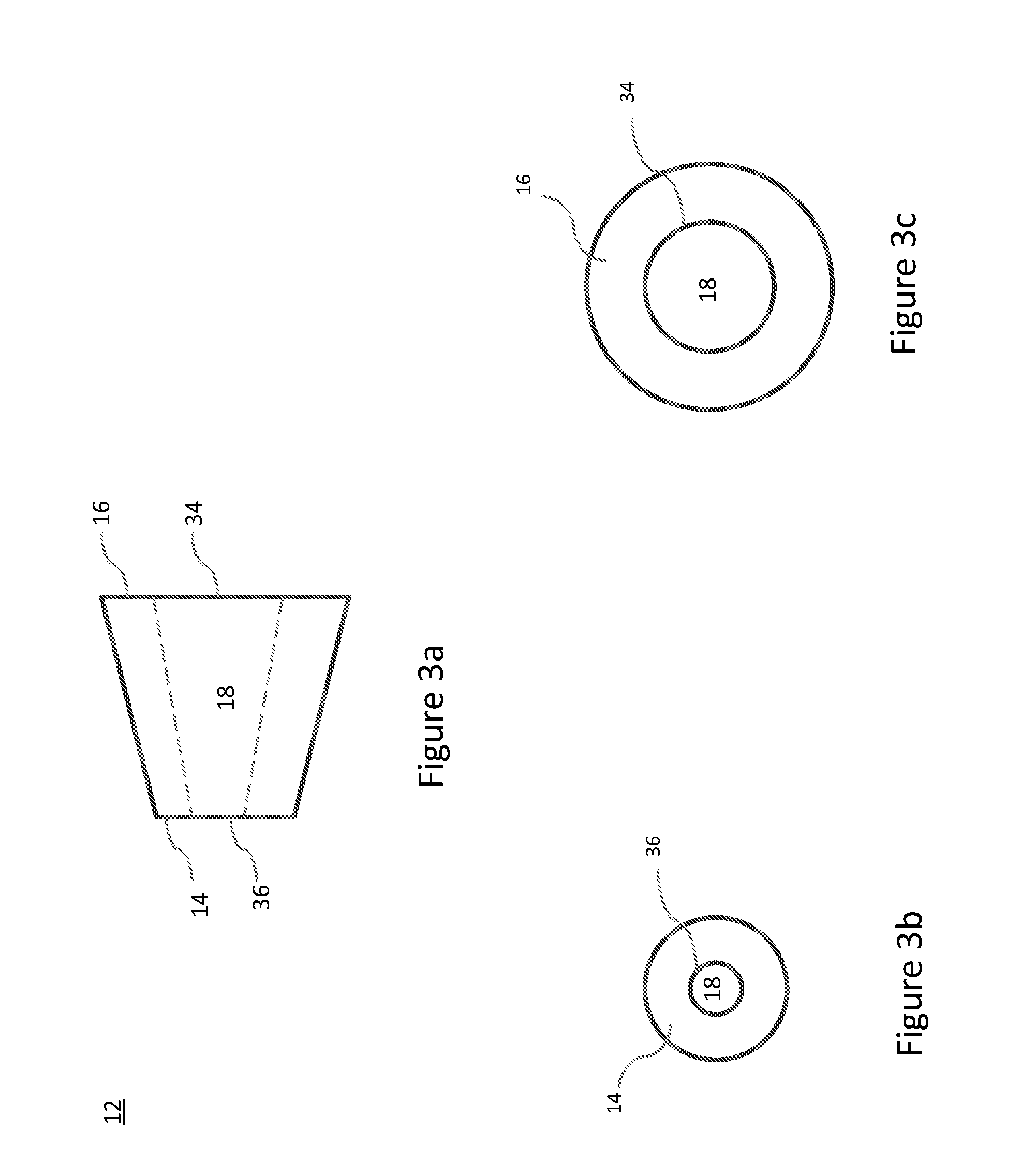Composite bone grafts, particulate bone-calcium sulfate constructs, and methods of treating joint injuries
a technology of composite bone grafts and implants, applied in the field of composite bone grafts and surgical implant assemblies, can solve the problems of increased operation duration, degenerative joint changes, and increased morbidity rate, and achieve the effect of convenient handling
- Summary
- Abstract
- Description
- Claims
- Application Information
AI Technical Summary
Benefits of technology
Problems solved by technology
Method used
Image
Examples
example 1
Testing the Biochemical Properties of Constructed Composite Grafts
[0064]Fascia lata tubes are strong biomechanical constructs. Their biomechanical properties as compared to other ACL replacement allografts are given in table 1.
TABLE 1Comparative Strength of ACL Replacement ligaments.LigamentNo. testedLoad to failure N (mean)Tibialis anterior tendon19822Achilles tendon82204Patellar ligament (whole)82521Patellar ligament (½)101677Peroneous longus tendon12876Tibialis posterior tendon10900Gracilis tendon10697ACL15867Fascia lata 3 cm strips8994
example 2
Preparation of Solid Implantable Bone Constructs
[0065]Calcium sulfate studies have been reviewed by Alexander et al (ICRC Critical Reviewers in Biocompatibility, 1987; 4:43). Calcium sulfate is biocompatible, does not evoke inflammatory response, and does not inhibit bone formation. Eventually calcium sulfate may be replaced by new bone, but resorption of calcium sulfate is more rapid than the rate of its replacement with new bone. Clinical studies with calcium sulfate implanted alone or mixed with demineralized bone matrix, autologous bone or bone morphogenic protein (BMP) reveal that calcium sulfate alone is as effective as it is in compilation with the above listed substances (LeGeros RZ et al, Bioactive Bioceramics. In Orthopaedic Biology and Medicine: Musculoskeletal Tissue Regeneration (WS Pietrzack ed) Human Press, 2008 incorporated herein by reference) calcium sulfate degrade within 5-6 weeks. However, it has been demonstrated by the inventors that compact composite calcium ...
example 3
[0069]Calcium sulfate hemihydrates have solubility in water that is higher than that of calcium sulfate dehydrate or anhydrous calcium sulfate. Therefore when properly mixed with water, calcium sulfate hemihydrates will dissolve and then recrystallize to form gypsum cement. The formation of gypsum cement depends on the amount of water added to calcium hemihydrates. The formation of cement is accompanied by heat generation. The period during which heat is produced can vary from 3 to 5 minutes to 45 minutes.
[0070]To produce a paste which hardens in 5 to 10 minutes a mixture of 0.25 ml of water with 1 gm of calcium sulfate hemihydrates can be used. However, the addition of bone microparticles to calcium sulfate hemihydrate changes its characteristics when mixed with water. For example, a mixture of 30 wt-% of calcium sulfate hemihydrates and 70% bone particles will not solidify and will remain a paste. In addition, a paste that hardens in 5-10 minutes is produced whe...
PUM
 Login to View More
Login to View More Abstract
Description
Claims
Application Information
 Login to View More
Login to View More - R&D
- Intellectual Property
- Life Sciences
- Materials
- Tech Scout
- Unparalleled Data Quality
- Higher Quality Content
- 60% Fewer Hallucinations
Browse by: Latest US Patents, China's latest patents, Technical Efficacy Thesaurus, Application Domain, Technology Topic, Popular Technical Reports.
© 2025 PatSnap. All rights reserved.Legal|Privacy policy|Modern Slavery Act Transparency Statement|Sitemap|About US| Contact US: help@patsnap.com



